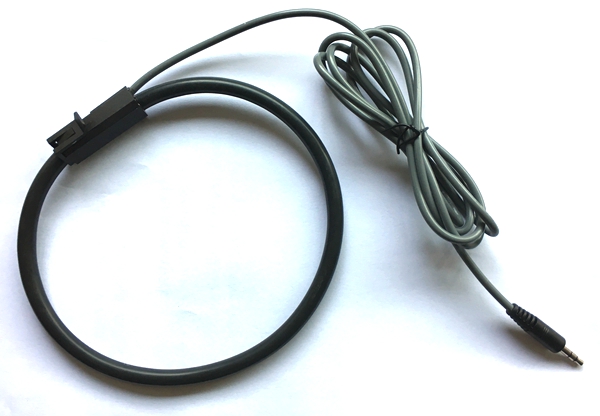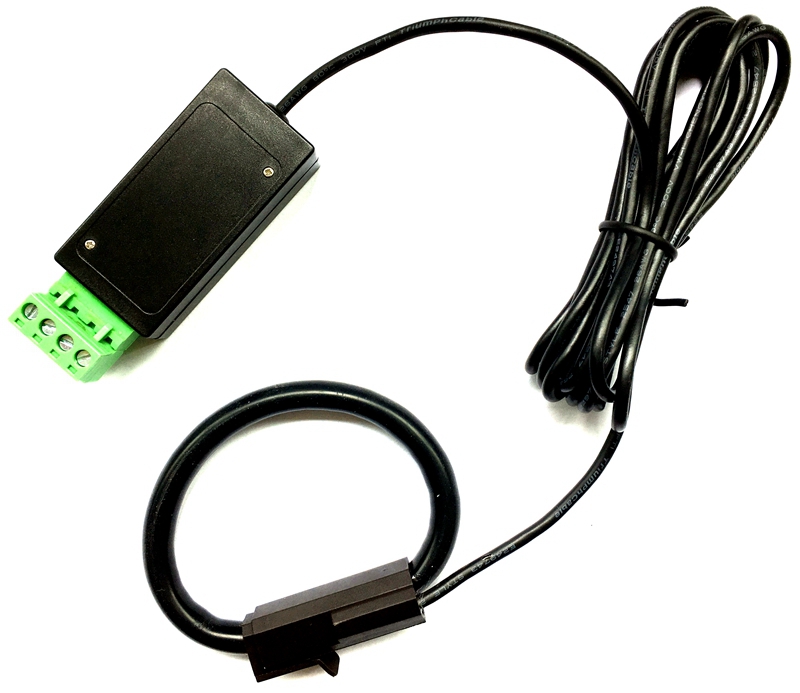What is a Rogowski coil?
The Rogowski coil is a flexible clip-on hybrid inductor coil that can be easily coiled around a current conductor for measurement, capable of measuring large currents of several thousand amperes without expanding the size of the voltage transformer.
Rogowski coils are electronic voltage transformers used to measure alternating currents such as fast transients, single-pulse currents of power electronic devices, or sine function currents of power plugs at 50 or 60 Hz.
If you are dealing with AC currents in the tens of amps and looking forward to making flexible current measurements, consider using a Rogowski coil current probe. Let's take a look at the basic working principle of the Rogowski coil.


The principle of Rogowski coil
According to Faraday's law, it is stated that the total electromotive force detected in the series closed circuit is positively correlated with the time elasticity coefficient of the total magnetic flux of the connecting line.
A Rokowski coil is similar to an alternating current voltage transformer in which the operating voltage is directed to the second coil and at this point is positively correlated with the current through the insulated conductor. The important difference is that the Rokowski coil contains an air core, which is the reverse of the current-voltage transformer, which is magnetically coupled to a second winding by means of a high-permeability steel core. The hollow core adopts the design scheme of lower insertion impedance to complete the fast data signal response and the linear data signal working voltage.
An air core coil is placed in a loop around a current-carrying electrical conductor, and the electromagnetic field caused by the alternating current induces a voltage in the coil. The Rokowski coil is converted into a working voltage that is positively correlated with the current elastic conductor coefficient (derivative function) in the coil loop. Hereafter, the coil operating voltage is fused so that the Rogowski coil probe gives an output voltage proportional to the input current data signal.
Advantages of Rokowski Coil Probes
Rokowski coil current probes have many advantages over many different types of current sensor or magnetic induction technology.
– High current measurement without core saturation. Rogowski coils can measure large currents (in the range from several mA to several kA) without core saturation, because the Rogowski coil probe uses a non-magnetic "hollow" core. The limit of the measurable current is limited by the maximum input voltage of the measuring instrument or by the operating voltage collapse limit of the coil/integrator circuit element. Other current sensors will become heavier with the increase in the range of the measured current. The Rogowski coil can maintain the same small volume because it is independent of the current to be measured. This makes the Rogowski coil become the most effective special-purpose tool for measuring hundreds or even thousands of amps of AC current.
– Flexible application, the light-shaped broken ball sensor coil is flexible in application, and can easily encapsulate the current-carrying electrical conductor. It can be inserted into inaccessible components within the power circuit. Most Rogowski coils are slim enough to fit between the legs of a T0-220 or TO-247 output power semiconductor package without the need for additional coils to connect current probes. This also guarantees the advantage of the coil for high signal integrity measurements.
– Maximum network bandwidth >30MHz. Enables Rogowski coils to measure current data signals with very fast transition rates – such as data signals in the thousands of A/µsec. The bandwidth test feature allows data analysis of advanced harmonic currents in systems operating at high power switching frequencies, or precise monitoring of power switching waveforms with faster rises or rises. The advantage of completing high signal integrity measurements.
– Non-invasive or high quality measurements. Because of their low insertion characteristic impedance, the Rogowski coil draws very little current from the machine under test. The characteristic impedance introduced into the equipment under test due to Rogowski coil probes is only a few ohms, so this type of coil is suitable for faster data signal response and very linear data signal operating voltage.
– Low cost Compared with Hall effect sensor/voltage transformer coil current probes, Rogowski coils are generally less expensive.
Lightweight, sandwich-type sensor coils are flexible and can easily encapsulate current-carrying electrical conductors.
Rokowski coil current limiting
– Only for AC current, Rogowski coil cannot solve DC current, the coil is only suitable for communicating AC current.
– Sensitivity, Rogowski coils are less sensitive than current transformers due to lack of high magnetization cores.
Digital oscilloscope current probes allow digital oscilloscopes to measure current, extending their primary use beyond measuring operating voltage. For the most part, Rogowski coil current probes magnetically induce current flow in electrical conductors and convert the current into an operating voltage that the probe can query and measure on a digital oscilloscope. The most common method of current measurement is the magnetic induction of an electromagnetic field into an energized electrical conductor.
In addition to Rogowski coil probes, there are also various types of current probes that can be used, and each probe has the best use. The results that can be obtained are also very good when properly used in the application of the design scheme.
There are many ways to connect test equipment coil probes to the device under test (DUT). One of the methods is electric welding, which can ensure reliable connection and minimize parasitic detection hazards by keeping the cable length and connection as short as possible. Many of Keysight's performance digital oscilloscope probes use electric welding connections. As probes and facilities continue to get smaller, it is increasingly important to use proper special tools and welding expertise in order to better prevent damage and connection problems.
However, the fusion application of the N5381A/B solder-in probe front and the InfiniiMax 1169A/B probe amplifier is an excellent choice to expand the network bandwidth to more than 3dB. Since the maximum network bandwidth of the N5381A/B exceeds the traditional 12GHz network bandwidth, Moreover, the peak point of the frequency response curve in front of the probe can help to compensate for the reduction of the network bandwidth of the probe amplifier.

